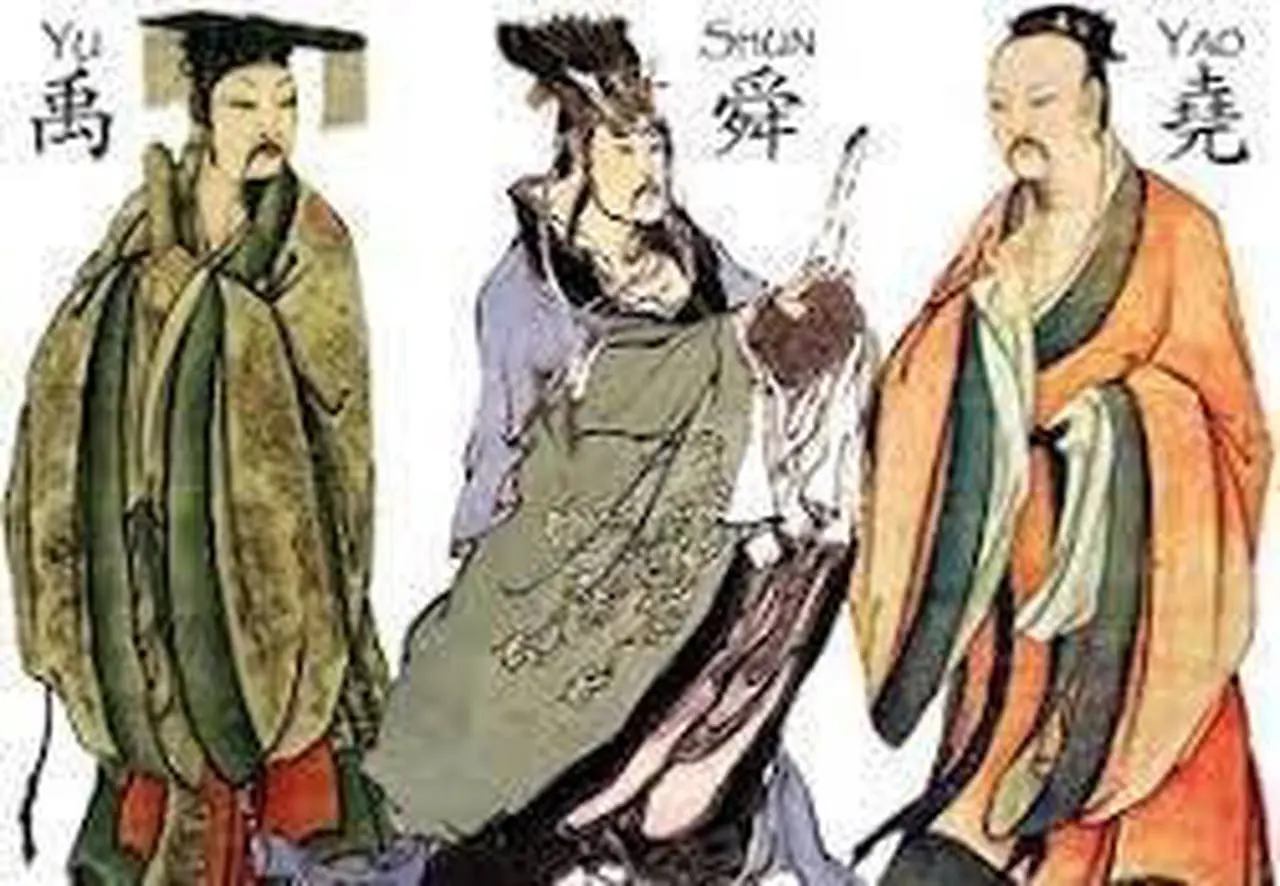The last two of the Five Legendary Emperors — Emperor Yao and Emperor Shun — plus Emperor Yu — the first legendary ruler of the Xia Dynasty, which itself is regarded by most scholars as legendary, with a few links to archeology evidence — are sometimes called the Great Sage Kings, based on their virtues and skills as leaders. Most scholars regard them as moralistic constructs conceived during the Classical Period of Chinese history, around the 5th century B.C., about 2,000 years before the sage kings were said to have lived, to reflect prevailing views of good governance and ethics.
Dr. Robert Eno of Indiana University wrote: “The three model sage kings, Yao, Shun, and Yu, were expressions of the political ideals of the philosophers who celebrated them and who elaborated on their “historical” achievements. Their sage actions made the distant past a model for the future. In actuality, of course, the exemplary tales of these legendary figures were designs for the future invented, or re-invented, by the thinkers of the Classical present.” [Source: Robert Eno, Indiana University indiana.edu /+/ ]
Venerated as the first emperor of China, Yu had thousands of concubines because he believed the more sex partners he had the longer he would live. He reputedly became immortal after he made love to a thousand young virgins. Emperor Yao was famous for his benevolent rule and lifestyle of a simple farmer.



Leave a Comment